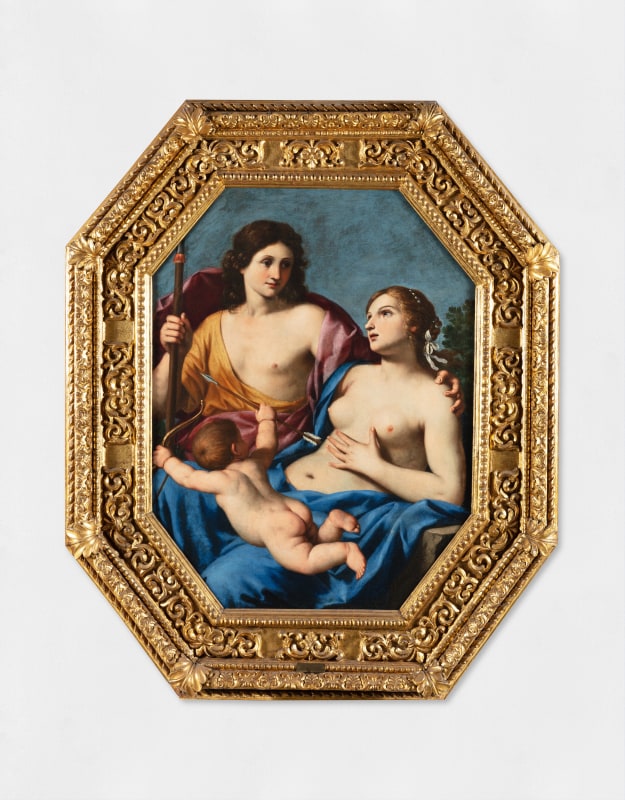-
Biography
Giacinto Gimignani (Pistoia, Italy, 1606 - Rome, Italy, 1681)
Born in Pistoia in 1606 as son of the painter Alessio Gimignani, he studied, presumably, at his father's studio.
His presence in Rome is first documented in 1630, for the copy of a painting in the Stanze Vaticane. In Rome, he worked extensively for Giulio Rospigliosi, an intellectual and collector, the future Pope Clement IX. In his artworks, a classicist vocation is immediately clear, looking to antiquity, which in Rome he had the opportunity to study from life, but also to Raphael, Domenichino and Reni.
In 1639, he participated in the commission of sixteen paintings with subjects from Jerusalem Delivered for the Ambassador Extraordinary to Rome of the French Crown. The link with France and French artists strongly characterised his Roman period.
In 1640, he married Cecilia, daughter of the Veronese painter Alessandro Turchi, with whom he had eight children.
Turchi's classicism influenced him greatly, as recognised in the sequence of works to which the Holy Family in S. Maria dell'Anima, 1640, and the Allegory of Hope in the Pallavicini collection belong.
Gimignani is particularly appreciated for his style, and his limited commissions, compared to his more famous contemporaries.
At the same time he also took many commissions from the provinces of Tuscany and Emilia. In 1652, given the diminishing professional opportunities, he moved to Florence, where he worked for the Medici tapestry, with the cartoon for the scene of the Entrance of Joan of Austria in Florence, now in the Uffizi.
In Pistoia, however, he produced a series of paintings for the Rospigliosi family of Pistoia, twenty-five paintings with stories from the Old and New Testaments. The style of the series takes up the Roman taste, updating it with the soft taste of Florentine painting of the time.
The situation in Rome unblocked with the election of the new Pope in 1655, from the Chigi family, and with the return to Italy of Giulio Rospigliosi.
In 1661, the artist re-established himself in Rome, where he resumed his activity, with a more Berlinian language, in which pure classicism is overcome by the illusionism in vogue at the time, without ever going as far as the Baroque.
This style of his increasingly brought him closer to purely professional, almost second-rate images, even if for the great Roman families.
At the end of his life, in his last works, the artist returned to a clear and composed classicism.
His production of drawings is vast, and divided among various collections around the world. The artist died in Rome in 1681. Many unfinished paintings were completed by his son Ludovico.
Photo UniCredit Group (Sebastiano Pellion di Persano)
-
Works
Giacinto Gimignani (attribuito a): Italian, 1606-1681
Giacinto Gimignani is a 17th century Italian artist, particularly active in Rome, who worked for the most illustrious Roman families such as the Barberini, Chigi, Colonna, Rospigliosi, Corsini and Albani families, in whose collections he is still present today.Join our mailing list
* denotes required fields
In order to respond to your enquiry, we will process the personal data you have supplied in accordance with our privacy policy.



